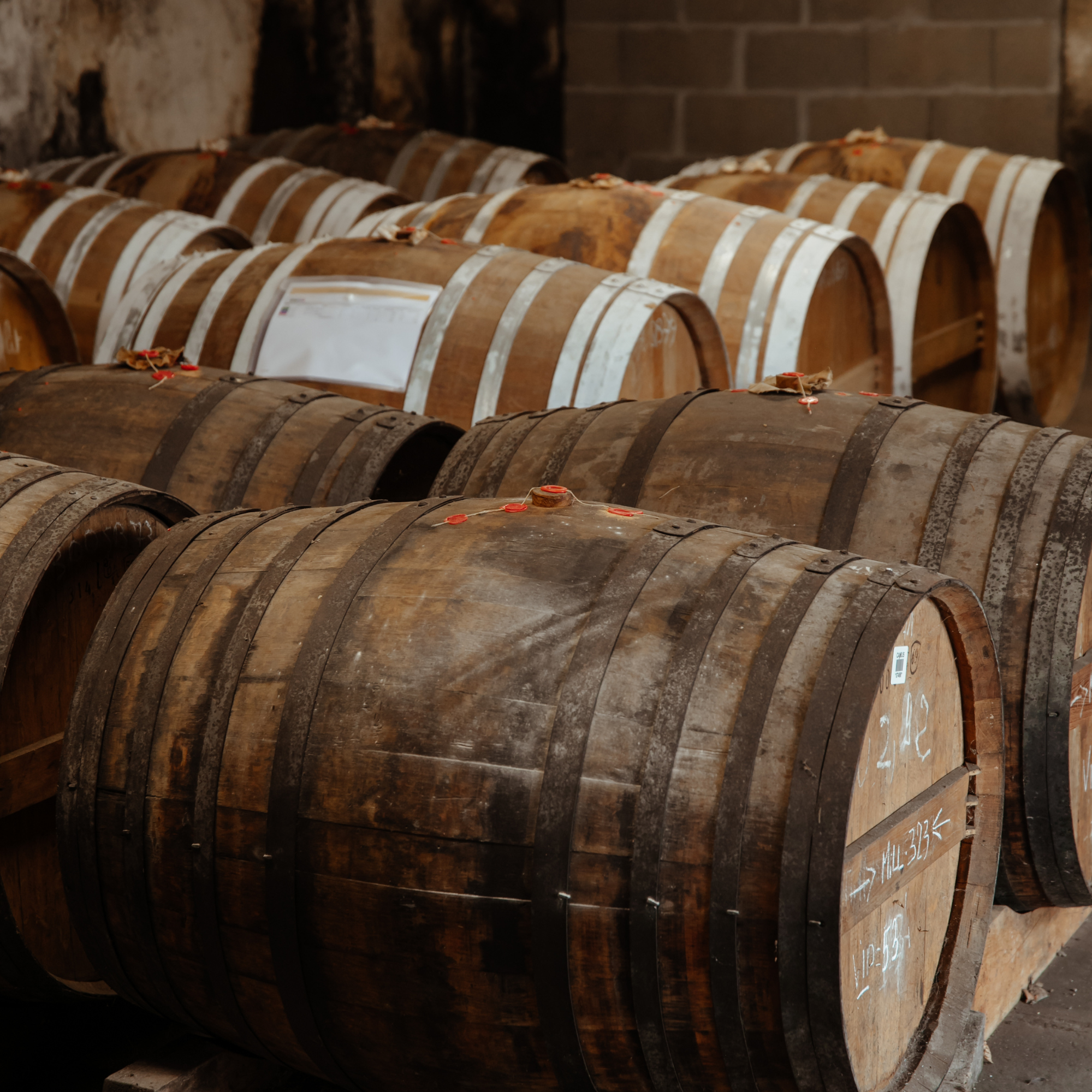Our 3 pillars
The intense aromatic characteristics of our Cognac range are strictly linked to three cornerstones to which we rigorously adhere in terms of our production process.
We select only high quality wines and keep them unfiltered in order to preserve their highly aromatic components, represented by fatty acid esters.
We distill exclusively by hand using small stills.
We only use small barrels for aging to maximize contact between the liquid and the wood.

THE USE OF LINKS
CAMUS is the only Cognac house to distill all its wines (not just Borderies) with the lees.
Most other Cognac houses, especially the larger ones, prefer to have more neutral eaux-de-vie that can be blended more easily in large productions.
The quality of wines has improved greatly over the last 30 years. Today's wines are significantly better than those of the past and analysis technology now makes it possible to very precisely control the qualities of wines before distillation.

Distilling wine with the lees (unfiltered) allows many more aromas to be extracted from the wine because the distillation process is a concentration of the wine's aromas. It is a deliberate choice that CAMUS made since its objective is to produce a very aromatic Cognac with great fruit intensity and a floral taste. This is the CAMUS house style.

It allows the first 20 batches which flow at the start of the distillation (called heads) to be separated into different containers, batch by batch. So after the distillation begins, we end up with 20 vessels from a single scope. These containers are extremely important because they contain all the esters and fatty acids that carry the oily extract along with the more aromatic substance in the distillate.
After careful tasting by our master distiller, these 20 containers are selected one by one and some of them are added to the final distillate. The others are thrown away.
We use 350 liter barrels made of fine grain wood. The exclusive use of small barrels maximizes contact between the liquid and the wood.


Wooden forests like the Tronçais forest in Allier are made up of high-density, tight-grained trees. The logs are long, without knots. These oaks are known for having particularly soft tannins. This characteristic makes it possible to avoid giving too much oak to the eau-de-vie and to best develop the floral and fruity aromas.




